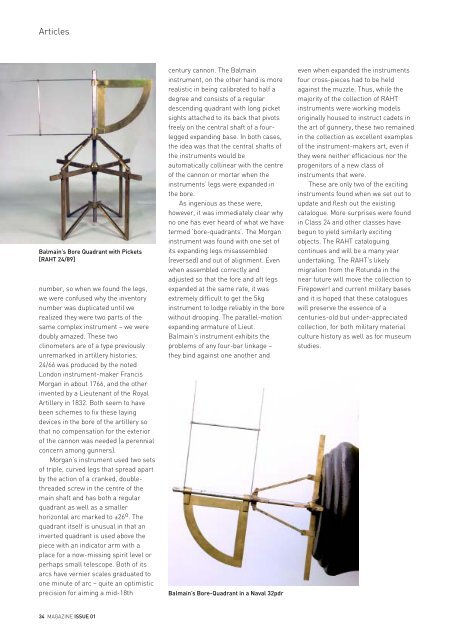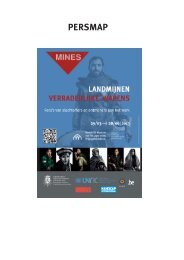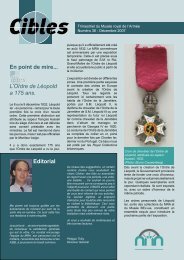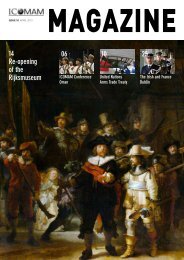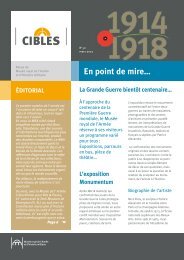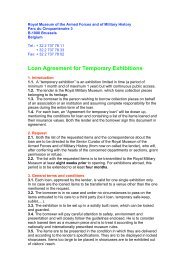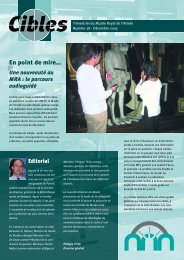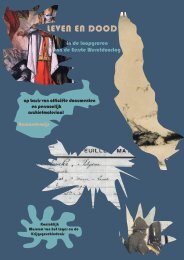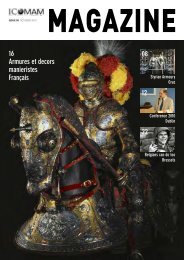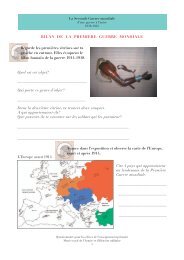Download issue 02 (Low resolution), April 2009 (PDF, 1,7 MB)
Download issue 02 (Low resolution), April 2009 (PDF, 1,7 MB)
Download issue 02 (Low resolution), April 2009 (PDF, 1,7 MB)
- No tags were found...
Create successful ePaper yourself
Turn your PDF publications into a flip-book with our unique Google optimized e-Paper software.
ArticlesBalmain’s Bore Quadrant with Pickets[RAHT 24/89]number, so when we found the legs,we were confused why the inventorynumber was duplicated until werealized they were two parts of thesame complex instrument – we weredoubly amazed. These twoclinometers are of a type previouslyunremarked in artillery histories.24/66 was produced by the notedLondon instrument-maker FrancisMorgan in about 1766, and the otherinvented by a Lieutenant of the RoyalArtillery in 1832. Both seem to havebeen schemes to fix these layingdevices in the bore of the artillery sothat no compensation for the exteriorof the cannon was needed (a perennialconcern among gunners).Morgan’s instrument used two setsof triple, curved legs that spread apartby the action of a cranked, doublethreadedscrew in the centre of themain shaft and has both a regularquadrant as well as a smallerhorizontal arc marked to ±26 o . Thequadrant itself is unusual in that aninverted quadrant is used above thepiece with an indicator arm with aplace for a now-missing spirit level orperhaps small telescope. Both of itsarcs have vernier scales graduated toone minute of arc – quite an optimisticprecision for aiming a mid-18thcentury cannon. The Balmaininstrument, on the other hand is morerealistic in being calibrated to half adegree and consists of a regulardescending quadrant with long picketsights attached to its back that pivotsfreely on the central shaft of a fourleggedexpanding base. In both cases,the idea was that the central shafts ofthe instruments would beautomatically collinear with the centreof the cannon or mortar when theinstruments’ legs were expanded inthe bore.As ingenious as these were,however, it was immediately clear whyno one has ever heard of what we havetermed ‘bore-quadrants’. The Morganinstrument was found with one set ofits expanding legs misassembled(reversed) and out of alignment. Evenwhen assembled correctly andadjusted so that the fore and aft legsexpanded at the same rate, it wasextremely difficult to get the 5kginstrument to lodge reliably in the borewithout drooping. The parallel-motionexpanding armature of Lieut.Balmain’s instrument exhibits theproblems of any four-bar linkage –they bind against one another andBalmain’s Bore-Quadrant in a Naval 32pdreven when expanded the instrumentsfour cross-pieces had to be heldagainst the muzzle. Thus, while themajority of the collection of RAHTinstruments were working modelsoriginally housed to instruct cadets inthe art of gunnery, these two remainedin the collection as excellent examplesof the instrument-makers art, even ifthey were neither efficacious nor theprogenitors of a new class ofinstruments that were.These are only two of the excitinginstruments found when we set out toupdate and flesh out the existingcatalogue. More surprises were foundin Class 24 and other classes havebegun to yield similarly excitingobjects. The RAHT cataloguingcontinues and will be a many yearundertaking. The RAHT’s likelymigration from the Rotunda in thenear future will move the collection toFirepower! and current military basesand it is hoped that these catalogueswill preserve the essence of acenturies-old but under-appreciatedcollection, for both military materialculture history as well as for museumstudies.34 MAGAZINE ISSUE 01


